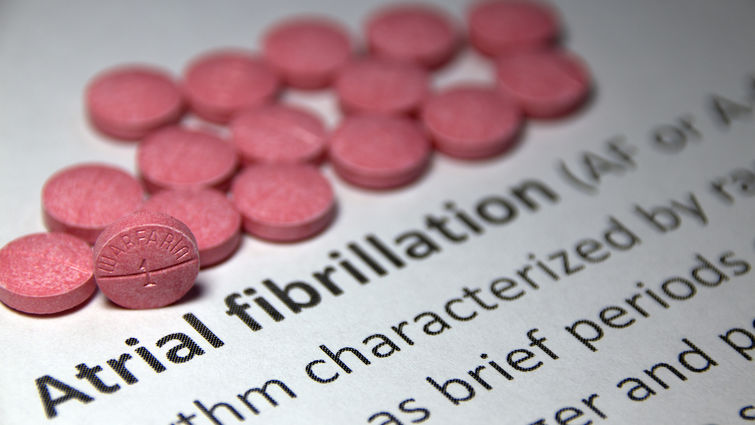
Fifty percent of people with Atrial Fibrillation (AFib) — an irregular heart rhythm — have it and do not even know it, creating a clear pathway for the possibility of stroke.
Rahul Bhardwaj, MD, a heart rhythm specialist at Loma Linda University Health, says many people do not know they have it because some of the smallest signs can be dismissed, or they may not have symptoms at all. An unfortunate fact is that many patients with symptoms are not treated early for a number of reasons.
“People may write it off because they are told their symptoms are nothing or a doctor may say ‘ah, it’s AFib, we will leave it alone,’” Bhardwaj says. “Also, people might not want to believe something is wrong with their heart because it’s scary.”
What can be even more frightening, Bhardwaj says, is what AFib can lead to if not checked early. The biggest complication of AFib is stroke, which is highly preventable with appropriate therapy. With 6 million people in the United States living with the condition, the heart rhythm specialist says it is imperative to know the facts. Here, he breaks down the facts about AFib and how it can be treated.
- Know the Symptoms. Understanding the symptoms is the first step to identifying the problem and making an accurate diagnosis. Common symptoms can include persistent heart palpitations, dizziness, light-headedness, fatigue, shortness of breath or confusion.
- AFib can often co-exist with other diseases. Bhardwaj says AFib can be a frustrating condition because it can exist alongside other diseases that increase risk for stroke, such as high blood pressure, diabetes, vascular disease or kidney disease.
- Certain factors make you at risk for the heart condition. Bhardwaj says the elderly are at higher risk for AFib, but he has also treated it in patients as young as 17. Other risk factors that can provoke arrhythmia include high blood pressure, high thyroid level, high alcohol intake or any stimulant intake, and sleep apnea.
- Treatments have changed, allowing patients to live fully after being diagnosed. As mentioned above, Bhardwaj says the old practice for some doctors was to leave atrial fibrillation alone, even when symptomatic, but he wants to educate the public on the new standard of care. AFib can be treated effectively with catheter ablation — in which surgeons use a catheter to stop abnormal signals in the heart tissue — to effectively restore normal rhythm. New techniques to reduce stroke have also been developed, including left atrial appendage closure with a new device called the WATCHMAN Device. The device became available earlier this year through the Arrhythmia Center at Loma Linda University International Heart Institute — the first institution in the Inland Empire and among the first in Southern California to offer this innovative treatment. The WATCHMAN is permanently implanted in the left atrial appendage to fix arrhythmia. The procedure can take one to two hours and is performed under general anesthesia.
The best way to stay equipped, before anything else, Bhardwaj says, is to get checked. At Loma Linda University International Heart Institute, a team of experts provides specialized care and are dedicated to whole person care. Visit MyChart to schedule an appointment or call 909-558-6600.
